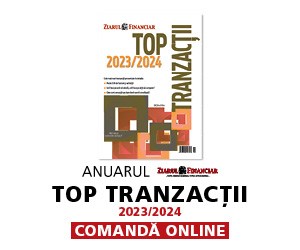Two counties of Romania have not been touched by the boom of modern trade formats, hypermarkets, supermarkets, cash and carry stores, discounters, yet: Botosani and Neamt. How long is this situation going to last?
"I think retailers have been taking into account the purchasing power of inhabitants in the respective areas and this has been balanced against chances of later development. Yet, everything depends on what priorities commercial chains have," explains Marius Caluian, deputy manager with MEMRB Romania, a market research agency.
In his opinion, these areas retailers have not expanded to yet will be covered in the following period.
"Information resulting from regional research is extremely important as regards expansion outside Bucharest, because there are major differences between cities, between consumers and particularly in terms of the purchasing power of inhabitants," says Sandra Florea, market research manager with Carrefour.
Almost 200 modern trade outlets are now competing on the domestic retail market, with more than 25% of these being concentrated in Bucharest, a survey by MEMRB market research agency reveals.
The capital city is followed by Timis, Constanta, Prahova and Cluj counties. Botosani and Neamt counties stand at the other end of the ranking, with no discounter, supermarket or cash and carry outlet opened here so far.
Purchasing power differences also cause modifications in the way consumer goods are acquired.
While in Bucharest hypermarkets account for 16% of modern retail formats and supermarkets over 58%, the situation is different when it comes to the other cities. In large cities, hypermarkets hold a mere 1.5% of this segment, while supermarkets cover less than 35%.
As a matter of fact, the only hypermarkets opened outside Bucharest are in Brasov and Ploiesti (Carrefour), and in Timisoara (Real).
Instead, the retail market outside Bucharest is dominated by discounters (Plus, Profi, Kaufland, Penny Market, Minimax or XXL Discount), which account for about 42% of the market. Some of these networks are not present with any store on the market of Bucharest. Generally, there are more Penny Market stores in the Southeastern part of the country, while networks such as Artima or Profi are dominant in Transylvania or Banat.
Discounters'' expansion is not specific to the domestic market, but a tendency manifest on the Central and Western European markets and the US market, as well. While in 2000 discount-type international networks comprised 12,000 outlets, in 2010 their number is projected to reach 25,000.
Last year, discounter store networks were the most dynamic of all.
Competition on the hypermarkets segment will tighten this year once Real, the retail unit of Metro German group, enters the market.
Modern trade formats
* Almost 200 modern trade outlets compete on the domestic market, with more than 25% of these concentrated in Bucharest
* In Bucharest, hypermarkets account for 16% of modern trade formats and supermarkets for over 58%
* In the other major cities, hypermarkets represent 1.5% of this segment, while supermarkets cover less than 35%.
* The retail market outside Bucharest is dominated by discounters
Romania in the cards for major Microsoft investment
Pentru alte știri, analize, articole și informații din business în timp real urmărește Ziarul Financiar pe WhatsApp Channels











































